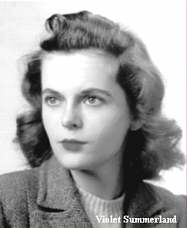|
|

"Ever
since Mnemosyne, the mother of the muses, gave the wax tablet to mortals,
memory, writing and technology have been interconnected. "
All thumbnails link to larger, high quality versions of Califia's illustrations. All images are from M. D. Coverley's Califia (Eastgate Systems, in press). Reproduced by permission of Eastgate Systems. 
|
Three-Dimensional
Dementia 2
Violet counts out on her fingers the eight names of the dipper stars that are clues to solving the riddle of the locations of the legendary gold mines marked on the map. Where the spatiality of the present tense is largely inaccessible to Violet who has little awareness of her surroundings, for her and for us long term memory and reading are proprioceptive experiences (Joyce 229). We recall our voyagings in life or in narrative in the three-dimensional space of our bodies. Michael Joyce calls memory "the act of traversing space" (160), and it is Violet who voyages intra-dimensionally through landscapes of time and place. She is continually asking for her dead husband Jack, and she recognizes the narrator Calvin immediately, although she has not seen him in years. Only as readers can we travel with her along her flights of mind and associative connections, for memory is an immersive space that we can fully inhabit only in madness, dreams, art or religious ritual. Joyce has said that "Meaning exists in the space of its unfolding" (102) and Violet's mind flowers outward into past lived lives, away from the present where she is cerebrally deaf to signals, and unfurls into the many narratives Violet will never speak. Only her urgent hand gestures in the present tell of her knowledge and awareness of the past. Alzheimer's might be seen as a cognitive model for the act of reading Califia. Voyaging through time and space where the overloaded short term memory is at tension with the demands of reading the text, Califia's wealth challenges us beyond powers of absorption, testing our memory through sheer excess information. The Solar Table designates the text: "A circle dance that has links and wheels within wheels." Each Journey triverges into three routes with "22 'true' ways and 32 'paths of wisdom.'" Calvin dubs Califia's deep structure a "Wheel Dance" where "Each of the three narrative paths gives you sets of choices in crazy eights" with eight circling wheels in total (Cabala Wheels: Calvin's Dance 4). These sudden changes in narrative direction create a kind of dementia as we are derailed in our reading and thrown back and forth in time. When we traverse space by activating a link, no tangible memory of the travel remains, and the 'back' button takes us backward in the structural organization of the text, not in the narrative. The reader must ramble and be sidetracked in Califia because all narrative lines are short and end in mid-air--and yet all are interlinked across time and geography by the constant of the quest for treasure. As Kaye says, "It's all the same thing. Past dreams, future dreams, present dreams" (Augusta's Path). 1 | 2 | 3 | 4 | 5 | 6 | 7 | 8 | Sources
|
||
